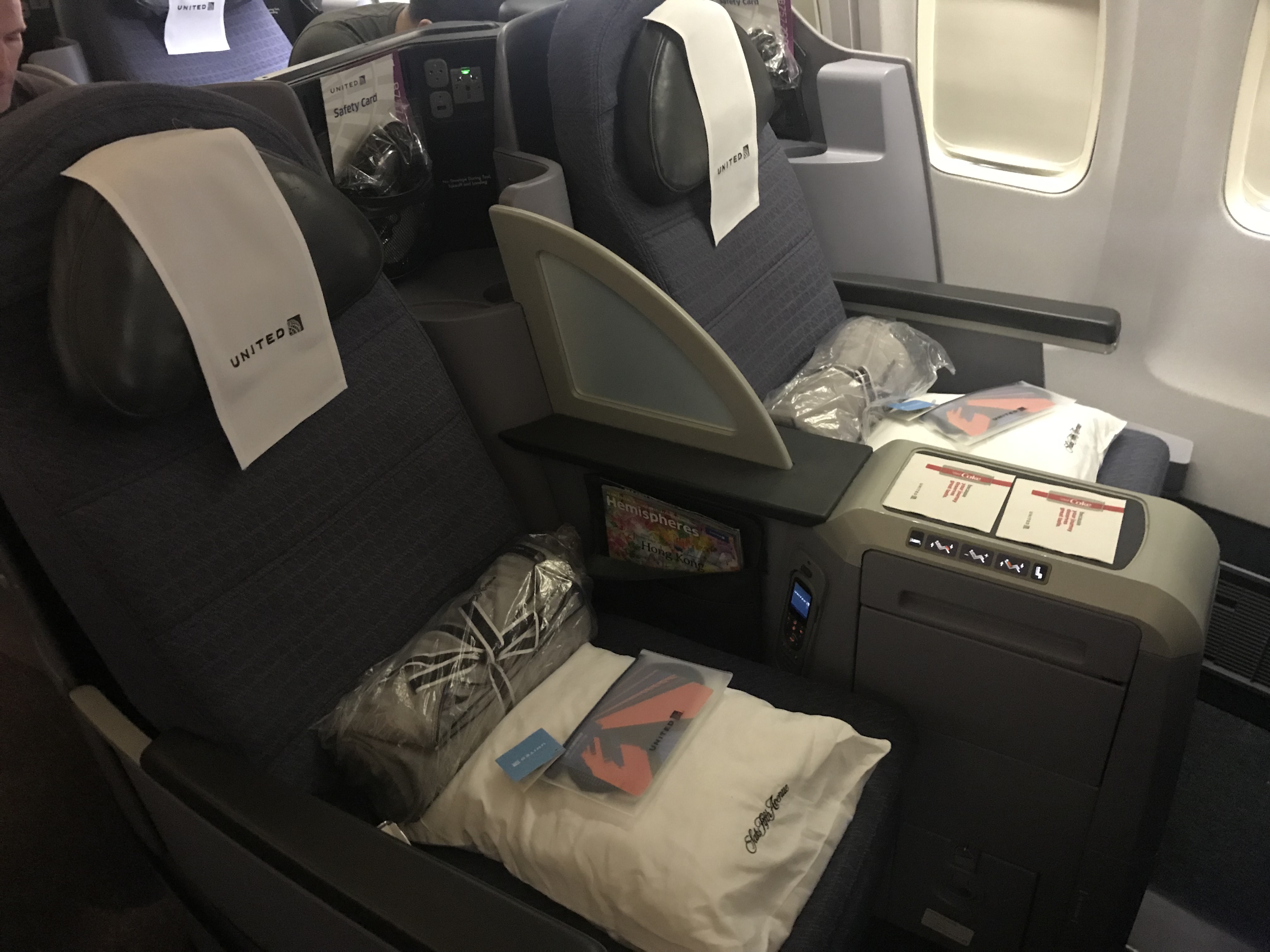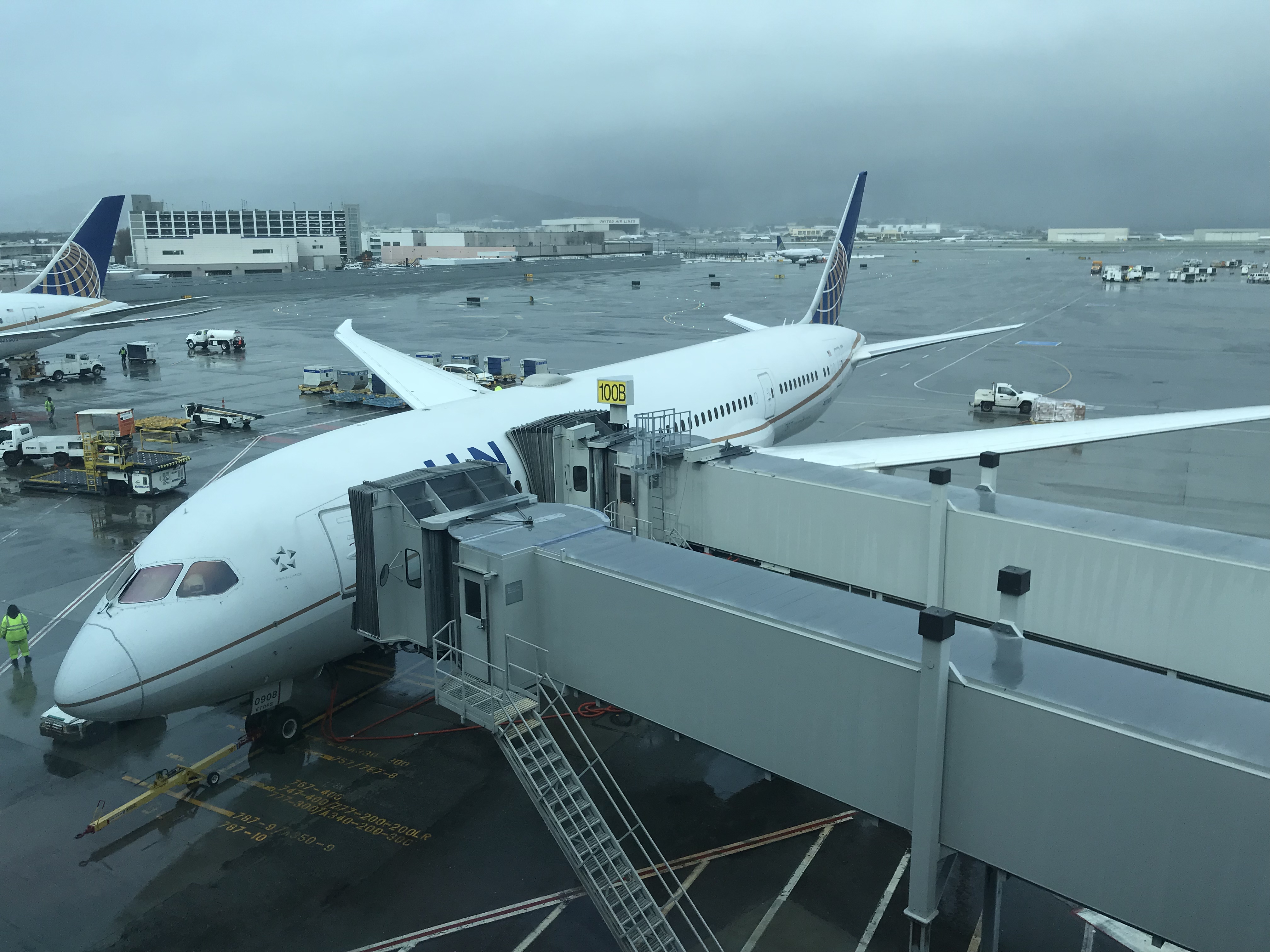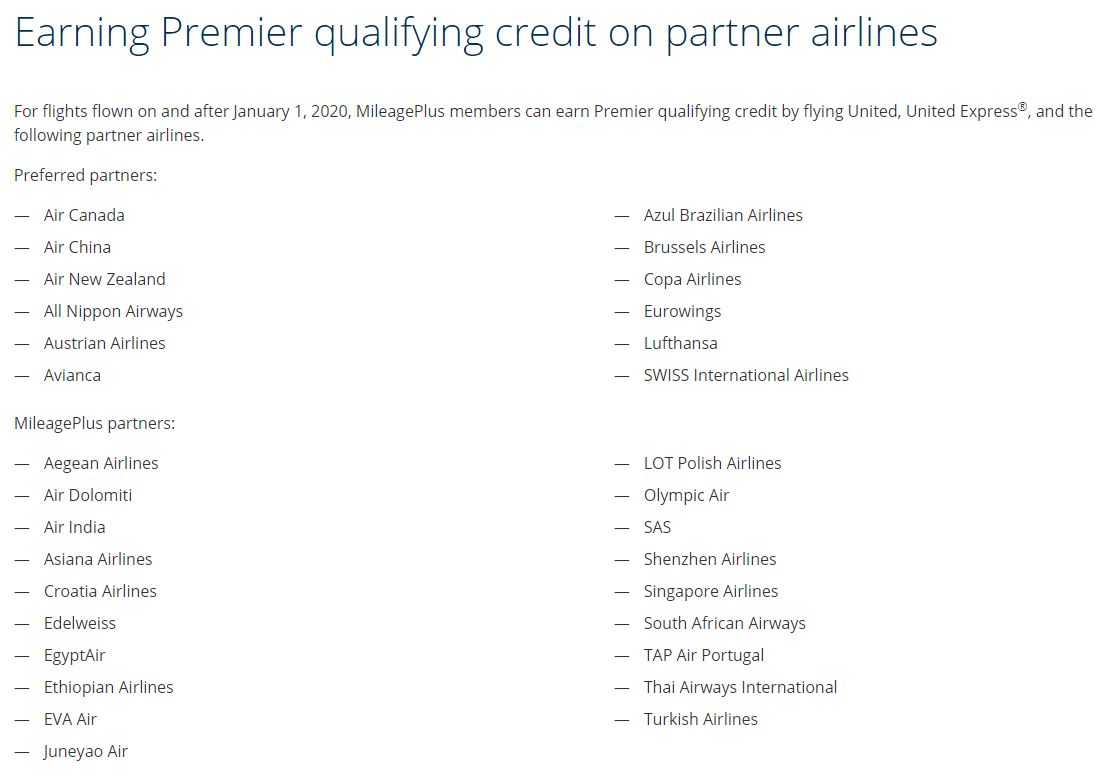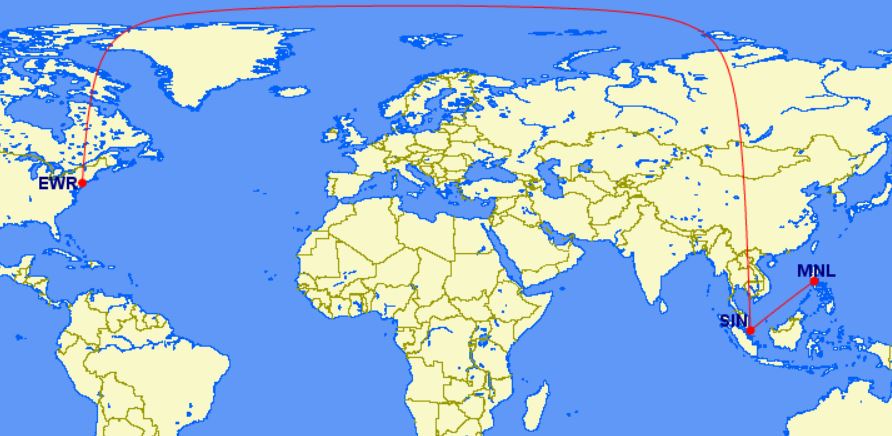
United Premier Qualification Changes in 2020
With a new year nearly upon us, most frequent fliers have locked in their elite status for 2020 at this point. For the past several years, all three major U.S. carriers have had roughly the same qualification requirements of both fare spend and flight miles/segments. But things are changing over at United. The 2020 United Premier qualification changes represent a substantial departure from other programs.
In this post I cover the upcoming changes, the winners and losers under the new Premier requirements, and a way to actually earn United status more easily than before.
2020 United Premier Qualification Changes
United made waves in October when they announced substantial changes to the way frequent fliers earn Premier status in their loyalty program. Previously, United tracked Premier Qualifying Miles (and Segments) and Premier Qualifying Dollars. Each elite status level required a certain threshold to be met for both.
These requirements are being replaced by Premier Qualifying Points (PQPs) and Premier Qualifying Flights (PQFs).

These changes are pretty drastic. For one, Premier Qualifying Miles disappear entirely. No longer will you need to worry at all about how far you fly. This is the strangest part to me, as most other elite programs track your flown miles.
Here are the new qualification requirements under the PQP and PQF system starting in 2020:

Flights and points. These are the only two things that will matter. And what matters most is really the points, as you can qualify solely on these. Calculating PQPs is simple for United tickets: you earn 1 PQP per dollar spent on the fare, excluding taxes.
The move to Premier Qualifying Points put the bulk of the focus on how much you spend with United rather than how much you fly. We’ve seen United (and other airlines) move more and more toward revenue-based award programs, so it really shouldn’t be surprised that they want to reward those who spend the most money with them.
The quick notes on the differences between the old and new systems:
- Premier Qualifying Flights roughly replace Premier Qualifying Segments and Miles, although they are obviously analogous to segments.
- Flown miles no longer matter at all (as only flight segments are counted). A short DCA-EWR hop receives the same flight credit as a LAX-SIN long-haul.
- Spend is what matters most. Premier Qualifying Points are analogous to the old premier qualifying dollars requirement. However, you now you can qualify only by these.
- Basic economy flights no longer earn any flight credit. They used to earn 0.5 segment per actual flown segment, but now they earn only PQPs based on the purchased fare.
One thing that hasn’t changed is that you must fly at least 4 segments on United metal to qualify for any status level.
My guess is that United was going for a simpler system, but I don’t think they succeeded. For example, they wrote that “a flight is a flight”, yet basic economy fares do not qualify as a flight.
The details of how United credits partner flights to PQPs are also confusing. This is the really big difference among the 2020 United Premier Qualification Changes, and what I want to focus on. It opens up the door to earning United elite status for much less.

The New Strategy: Using Partner Flights
Beginning next year, the credit earned by partner flights will change substantially. Under the old program, partner flights never earn PQDs. They earned Premier Qualifying Miles based on flown miles, but their was no spend credit. You had to spend money on flights ticketed by United to earn spend credit.
This always bugged me. Both Delta and American allow you to earn spend credit from partner flights in their respective programs. Specific partners and partner flights have often been a great avenue of more quickly earning status.
Now United will allow partner flights to earn PQP credit, which is the analog of the elite dollars requirement of other airlines. PQPs for partner flights are earned as a percentage of redeemable miles flown. The redeemable miles earned on partner flights are a function of the fare class and miles flown.
If you don’t like math, you’re missing out you might want to tune out now. Calculating PQPs from United flights is easy, but for partners, it is a multi-step process:
- Figure out the airline and booking class, and sometimes the region/country of travel, for your ticket. You’ll need each of these details.
- Check out this page of airline partners to search for the redeemable mileage credit for your partner flight.
- Calculate the number of miles flown. If the fare class isn’t the same for all segments, take that into account and calculate the segments in each class/partner separately. My favorite tool is MileCalc.
- Multiply the flown miles by the % credit based on the fare class.
Now you’ll have the number of redeemable miles earned for your partner flight. From here you need to divide by either 5 or 6 to determine the number of PQPs for your partner flight. Why? Because math is fun!
Preferred Versus Non-Preferred Partners
The difference in PQP credit varies only slightly by partner. I’m honestly not sure why United did this, other than to make things more confusing. You have to refer to this list to know which airlines are preferred partners and which are not.

Some of the preferred partners surprise me (seriously, Air China and Eurowings over Singapore??). But in general you have the Lufthansa Group, plus a handful of others that will earn slightly higher PDP credit. The difference is minimal, however. Divide by 5 won’t get you all that different a result than divide by 6.
In general, I’d look for fares that provide the most PQP value for dollars spent. These will usually be the cheapest long-haul flights. You also need to take into consideration the percentage of flown miles earned, which also means that premium cabins can earn a significantly higher number of PQPs (as they often credit 100% to 200% of flown miles as redeemable miles).
Now let’s take a look at a few examples of some of the best fares for earning elite status after the 2020 United Premier Qualification Changes take effect.
The Premium Economy Sweet Spot
When I realized the huge PQP potential for long-haul partner fares, I instantly wanted to see how the longest flight in the world stacks up. Singapore Airlines offers service between Newark and Singapore, which is 19,070 flown miles round-trip.
A round-trip can often cost ~$1,200. I’m seeing prices of $1,183 as the lowest on the calendar. But I went looking for even more potential, eventually settling on EWR-SIN-MNL as the best ticket. It is a hair less at $1,129 and even more flown miles.

This fare would earn four PQFs for the round-trip and PQPs according to the following:
- Flown miles: 21,982 round-trip (9,515 per long-haul leg, 1,476 per short-haul leg)
- Singapore Airlines R-class for premium economy: 100% flown miles as award miles
- Singapore Airline E-class for economy: 75% flown miles as award miles
- Total award miles: 21,244
- Total PQPs (award miles / 6): 3,540
This is an amazing return on your spend. An $1,129 ticket booked with United would earn less than 1,129 PQP. With this partner ticket, you’re getting over 3.1x the number of PQP per dollar spent! Two more United round-trips (with a connection each way), and you’re sitting at Silver Premier for less than half the typical cost.
Another option is an EVA Airways premium economy ticket from SFO. You can fly to Jakarta with a connection in Taipei for $1,121 round-trip in premium economy. The fare classes are P (discount premium economy) and B (full fare economy), both of which earn 100% flown miles.
The trip is a total of 17,648 flown miles. This means you’d earn 17,648 redeemable miles and 2,941 PQPs. Not quite as good as the previous Singapore ticket, but an excellent option for West Coast folks.

Leveraging Business Class Sales
If you can find a cheap fare, business class can also be an excellent way to earn a significant number of PQPs. In particular, if you can ever find a great deal on an Air Canada business class fare, all tickets earn 200% flown miles as PQPs, which is a huge boost.
I found a reasonable ticket from Los Angeles to Copenhagen for $2,060 in business class flying Air Canada on the outbound and Austrian Airlines on the inbound. The fare code is P-class for all segments, which means that the Air Canada segments will earn 200% flown miles as PQPs while the Austrian Airlines segments will earn just 100%. Still, it is a significant boost.
Doing the math for the 12,724-mile trek (remembering that both Air Canada and Austrian are preferred partners), you’ll earn 3,769 PQP for the itinerary. Not as great a multiplier, but still an excellent deal. If this was all flying Air Canada via YYZ, the PQP earnings would increase to 4,865 for the trip.
Even Some Economy Flights Are Fantastic Options
I’ve been eyeing a fairly common Air Canada fare sale that I’ve notice happens between the U.S. and China. You can often score a ticket for ~$350 from the Bay Area (cheapest is usually SJC) and Shanghai. Besides being very interested in visiting China again, this flight has the potential to actually earn you more Premier credit than if you bought a similar flight through United.
An itinerary from San Jose to Shanghai via Vancouver is being sold for just $329 at time of writing, which is an incredible deal.

It is a “deep discount economy” international K-class fare, earning 50% flown miles as redeemable miles. The itinerary is ~12,850 miles round-trip. You’d earn ~6,425 redeemable miles, worth over $100 by my estimation, which is an excellent return in its own right.
But it gets better. Dividing the redeemable miles by 5 (as Air Canada is a preferred partner), the flight will earn at least 1,285 PQPs. This is far more than you would earn by purchasing a $329 fare through United.
Three of these trips, and you would be nearly to United Premier Silver, spending less than $1,000. You would also be very tired of an Air Canada 787.
Winners and Losers Under the New Requirements
For anyone who tended to book United partner flights and credit them to MileagePlus, they are absolutely the winners. Discount long-haul tickets in essentially any class will generally earn more PQP than a similar-priced United flight. If this is you, these changes are almost overwhelmingly good.
If you book a lot of cheap domestic United fares, you’ll probably fare worse under the new system. The downside is that the qualification requirements (in terms of sheer dollars) have increased. Silver now requires 4,000 PQP. Treating these like PQD, this is essentially an increase of $1,000 in spend for status. Ditto for the other elite levels, which are all more expensive.
If I was a business traveler flying United domestically, I might go through my 2019 flights to see where I might stack up for 2020. If this puts you a status tier below where you are now, it might be time to change your loyalty.

Final Thoughts on the 2020 United Premier Qualification Changes
Chasing airline elite status is not something I typically do. I leveraged the Delta Medallion Qualifying Miles boost to earn Platinum status for all of 2019, which really paid off. But aside from that, and a couple other status matches or flukes, I’ve not been on the status hamster wheel. In my opinion, spending a ton of money chasing status is typically not worth it.
That being said, I see no problem carefully planning your travels through the year to set yourself up to earn elite status. Even if may cost a bit more, the perks can be well worth it. But I’m talking like $100s versus $1,000s spent, and you better be hitting top tier, or near-top tier status.
In any case, I hope this post illustrates how you can leverage the new United Premier qualification changes to your advantage. The moderate United flyer is the loser in this game, while the occasional person who books a Star Alliance premium cabin is the definitive winner.



So I need to book direct with Lufthansa or Swiss for my trips, not United to leverage the miles I travel for my Africa and ME work trips? That is bizarre. But since I almost never get “real” Polaris, I’ll book with Swiss or Austrian and enjoy their much better business class and max the spend more easily since I’ll never meet the segment requirement flying long distance once a month. Now to see if my work will ALLOW me to book directly with a foreign carrier as opposed to via a US carrier…
It is bizarre. But if you fly a mix of international business trips and domestic business trips (on United), it will typically earn you status faster. Just do the math of PQP for the UA flight versus the partner flight.
If you’re paying $4k+ through United for your business fare, it may not be better. But the segment requirement should now be easier, as status requires fewer flights.
E.g. IAD-CAI on EgyptAir (I have no idea where you are based or fly, but this is an example) nonstop. Fare of $2,700. But it only earns you 1,945 PQP. Not better.
Opposite side of the coin: LAX-YYZ-DXB on Air Canada for $3,896. Earns 3,792 PQP booked through United. If you can book the same price directly with Air Canada, you’d earn 7,259 PQP.
Do you know if the mileage from partners is based on the ticket stock or the metal?
Codeshare flights accrue based on *operating* carrier, not ticketing carrier. Need to be careful with this on some tickets. The exception are tickets purchased through United, which accrue based on UA rates and not operating partner.
SO, I need to ticket on LH, and fly LH, for example. A LH ticket, with UA metal doesn’t do the trick? So, if this is the case, then it’s a strategy to keep me off of UA metal, until I reach status. Seems rather counter productive, no?
It does seem counterproductive. I don’t actually know how codeshare on United partners (LH ticket, but UA metal) credits to United. Never thought through that.
If you fly mainly international leisure and little domestically on UA, I’d probably still ditch the UA program entirely and stick with an excellent foreign carrier program.
You’d have to look into those, but I don’t think they’re much better. I am Europe based, but frankly, I like the service from United, flexibility on tickets, 1K line….
In the past, if it was a LH ticket, UA metal, it would credit according to the ticket issuer, which is why they have the two categories on their website “016” ticket, not “016” ticket.
And the fare basis are the same, except for Premium Economy. United has R and LH doesn’t have R, they N and G. So not sure how that will translate… Book on LH, for UA metal in R, but LH don’t have an R.
Another nasty footnote from the UA website:
International Basic Economy tickets on Air Canada, Austrian, Brussels Airlines, Lufthansa and SWISS are ineligible for Premier qualifying flights. International Basic Economy may be booked in various fare classes.
You still have to do 4 segments on United metal to qualify at any level.
Good reminder. I forgot to mention that. That requirement hasn’t changed.
So to reach lowest tier of status:
You pay 3000 USD on delta
You pay 3000 USD on AA
You pay 5000 USD on United
What a rip off. United, screw customers left and right.
It’s true, if you spend all your money directly with the airline for domestic flights, United is worth dumping.
But I could design a couple runs to get you to first tier status with United for < $2,000, and Gold status with Delta for < $3,000. It all depends on where you want to travel and how good you are at selectively using fare sales and specific carriers/routes/cabins to get more bang for your buck.
Let’s all be real. Wouldn’t you rather fly LH, SQ, ANA over United internationally. I’ve run the numbers in most fair classes and you should see a minimum of a 30 percent increase in PQPs flying partners. If you find the sweet spot and book preferred carries in Premium Economy you could be seeing double or on occasion triple the PQPs if you find the right fare.
Ian,
Is there a certain level at United, other than top tier, that is really a good one to be at? If one were Premier Silver, would these same proposed mileage runs move one to the next level, etc.
I would personally not spend any extra money if a run would only get you to Gold. If you can plan to target Platinum, there is definitely a value for the 40 PlusPoints, as this represents (I think) enough for a single economy -> business upgrade.
Plus, you get Economy+ for free at booking for you and up to 8 companions with Platinum. Great for family travel.
I would say if the cost of Gold -> Platinum via mileage run was $400-600, and you know you’ll put the benefits to use, I’d consider it. Otherwise, likely no. What I might consider is the cost to plan to target higher status while planning travel for 2020. If flying United earns you 400 PQP on a ticket, while flying Lufthansa for about the same cost earns 600-700 in economy, I might opt for Lufthansa.
As you mention, 1K is a *much* better proposition, as all the great benefits at United come at top tier. For me, flying Delta, their Platinum level is a better “middle tier” to target, as the miles alone (if you take the 20k bonus) are worth ~$250.